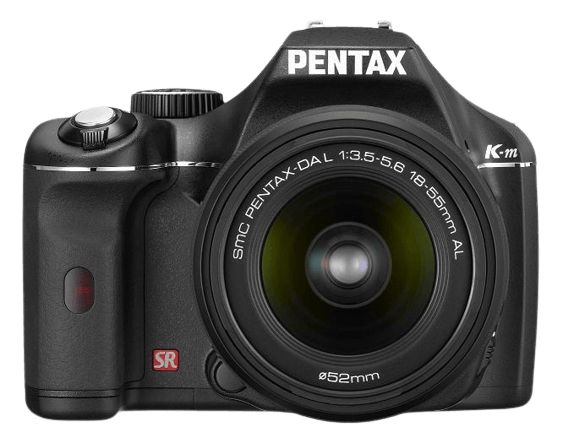Pentax KM Specs and Scores

The Pentax KM scores 41 out of 100 in our evaluation. Announced on September 22, 2008, and released the same year, this DSLR camera was initially priced at $550. The camera measures 123 x 92 x 68mm and weighs 590g (1.30lbs).
Comparing the Pentax KM to today’s market, it has dated specifications. However, it still holds value for those seeking a compact and lightweight DSLR. While not the top choice for modern photography, the Pentax KM serves as a reliable option for beginners or those on a tight budget.
Pentax KM Overview and Optics
The Pentax KM receives a score of 48 out of 100 for its optics. With a 10.2-megapixel CCD sensor, this camera has a DXOMARK score of 64 for the sensor. The APS-C sensor size and Pentax KAF lens mount are standard features in today’s market. Additionally, the camera has a shooting speed of 3.5 frames per second, image stabilization, and a 3:2 aspect ratio.
In the current market, the Pentax KM’s optics specifications are considered average. Cameras with higher megapixels and faster shooting speeds are available, providing improved image quality and performance. The Prime processor, while reliable, is not the most advanced option in today’s technology landscape.
The Pentax KM’s optics specifications, while not groundbreaking, offer a satisfactory performance for casual photographers. However, those seeking top-of-the-line image quality and speed may want to explore other options.
Pentax KM Video Performance
The Pentax KM lacks video capabilities. This camera focuses solely on photography.
Pentax KM Features and Benefits
The Pentax KM has a feature score of 21 out of 100. This camera comes with a 2.7-inch screen, offering a screen resolution of 230,000 dots. However, it does not have touchscreen capabilities, a flip screen, GPS, WIFI, or Bluetooth.
When comparing the Pentax KM to other cameras on the market, its features are quite basic. The lack of modern connectivity options, such as WIFI and Bluetooth, makes it less convenient for users who want to transfer their photos wirelessly. Additionally, the absence of a touchscreen and flip screen limits the ease of use and flexibility when composing shots.
Considering the specifications of the Pentax KM, it is evident that this camera may not be the best choice for users seeking advanced features and connectivity options. The camera’s basic offerings may suit those who prefer simpler functionality, but it may not be ideal for photographers looking for more versatile and modern features in their camera.
Pentax KM Storage and Battery
The Pentax KM receives a storage and battery score of 51 out of 100. This camera has a single memory card slot, accepting SD and SDHC cards. With a battery life of 1,800 shots, the Pentax KM operates on 4 AA batteries. However, there is no USB charging option.
In today’s market, the Pentax KM’s storage and battery specifications may not meet the expectations of some users. The limited memory card slot and lack of USB charging may be inconvenient for those who require more flexibility in their photography experience. Despite these limitations, the camera’s battery life is still quite impressive, offering ample shooting time for various photography situations.
The Pentax KM’s storage and battery capabilities may not be the most advanced, but its battery life makes it a reliable choice for those who value longevity in their photography sessions.
